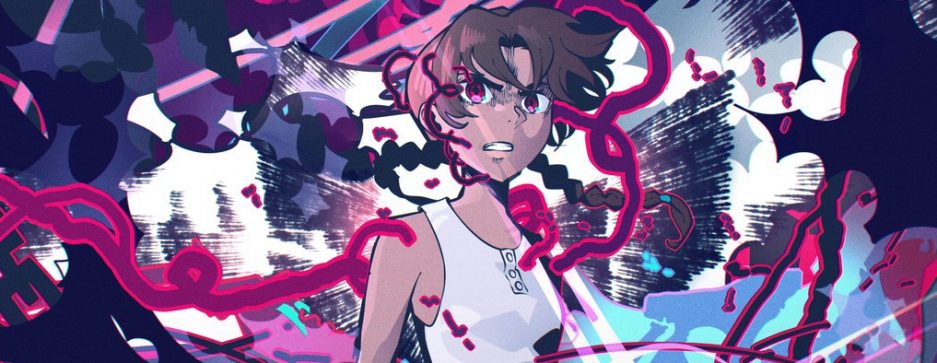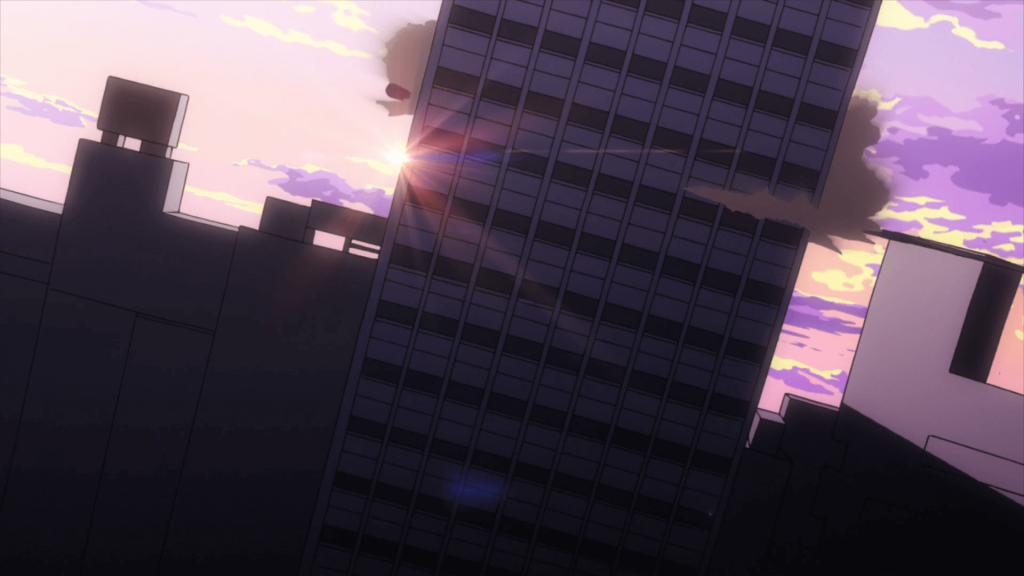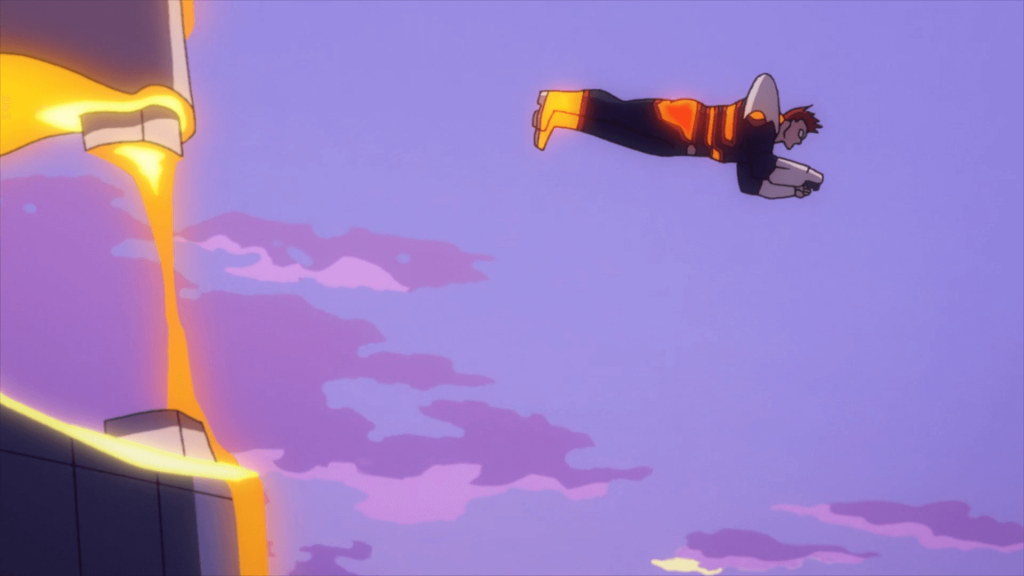On this blog I commonly find myself writing from a position of anticipating something which has either yet to happen, or conversely reacting to recent events around the industry. So with that in mind, I think there is some merit in looking back on the entire season which has just passed us by and share some thoughts, mainly production-related, in a more casual setting. As far as format goes, these will just be point form notes, no elaborate prose or any stylistic writing aimed at anything more than presenting the relevant information needed to understand our favorite animated series better! Also, it is important to stress that with this format my thoughts on each series as a holistic measure, an element which the sakuga community tends to overlook in favor of the more tangible elements, often to its detriment, will not be present.
Dorohedoro
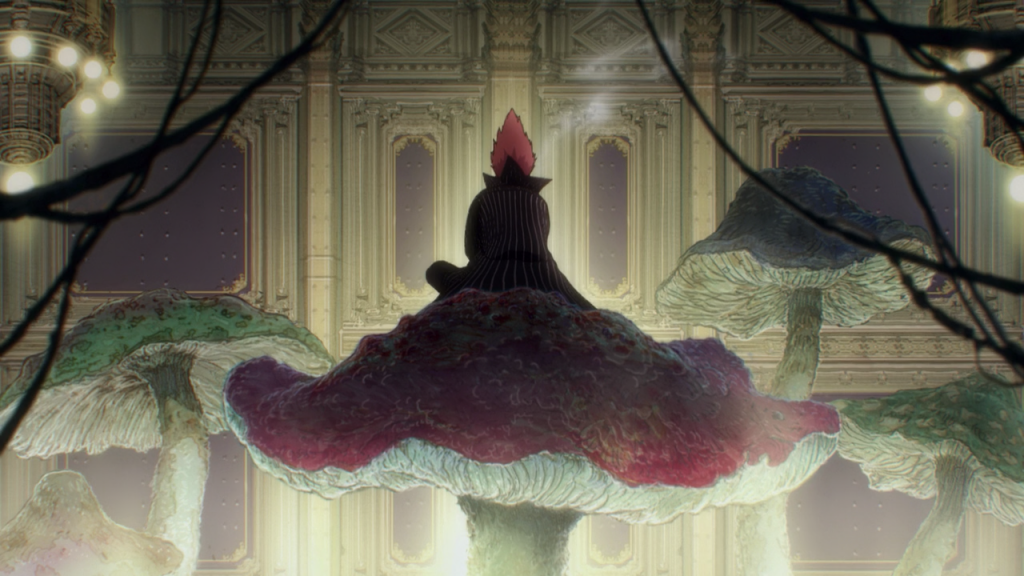
- While the mostly CGI production can’t be considered ideal from an animation appreciation perspective, given the circumstances it was absolutely the correct choice for MAPPA, a studio which frequently struggles to keep their 2D productions afloat, especially when they’re as demanding as this would have been.
- Series Director Yuichiro Hayashi seemed to thoroughly understand the ins-and-outs of the source material he was entrusted with. Dorohedoro is a manga with a lot of quirks, which only makes the fact that Hayashi went out of his way to storyboard the entire series all the more important- those oddities were consistently presented. Anime as a medium is filled with all sorts of compromises (the mainly CGI production found here for instance). So in that sense, it’s nice to see the ostentatiously bizarre vision of manga author Q. Hayashida presented in a way which felt similar enough to her own.
- Hayashi also found the time to deliver on a number of extremely fun endings, even referencing the original DOOM!
- Shinji Kimura is among the greatest art directors to have ever graced this medium and any occasion where he’s in a position to give life to (or remove life from?) neglected urban landscapes (Kekkai Sensen comes to mind), he is always and forever on point. Dorohedoro was no exception, featuring a mix of dirty grunge, sophisticated renaissance, and sometimes even dirty-grunge-sophisticated-renaissance architecture, his approach was a perfect fit for the series.
- Gosei Oda was an unexpected addition to this team. For whatever reason it seems the esteemed digital animator has strayed from the Shingo Natsume and Yuichiro Fukushi syndicate, entirely absent on both Boogiepop and the ACCA:13 OVA. Through a handful of episodes of Dorohedoro, his output had a number of people confused considering his strong sakuga reputation while also being given a leading role in this case. It wasn’t until MAPPA’s public relations twitter account shared a version of this cut before the finishing textures were applied that I realized Oda has probably handled a lot of the smoke animation throughout the series in his usual bubbly fashion, however it’s just been masked by the aggressive compositing. Unfortunate but… c’est la vie, his overall contributions were still great!
Haikyuu!! To the Top (cour 1)

- In my season preview post I was cautiously optimistic regarding a number of changes, namely the shift in character designs, but made sure to end on a solidly confident note regarding the approach and skill of new series director: Masako Sato. I’m glad she managed to fulfill my expectations and then some, as under her direction the franchise really hasn’t skipped a beat from where we left off from the much-adored previous seasons.
- Aside from maybe episode 10 where I felt the character art suffered pretty noticeably, the series maintained the usual high level of artistic integrity which we’ve grown familiar with out of Production I.G.
Full credit to Yuu Kobayashi for holding down the Chief Animation Director position for the first time in their career and doing a great job. - An even more sizable testament to the strength of I.G. can be found in the handling of the ever-so-important, yet criminally undervalued role of production assistant. Haikyuu!! To the Top turned out to be a training ground for an entire host (six to be exact) of brand new production assistants, a couple of whom had only debuted on Kabukichou Sherlock a few months prior, while most were seeing their first days on the job. Wisely, they were cushioned by six experienced chief production assistants, leading to an amusing twelve total production assistants (most episodes only have one) credited on nearly every episode.
- Takashi Mukouda‘s insanely prolific contributions aren’t much of a surprise considering this is far from the first time he’s attached himself to a TV production in this fashion, but I would be disappointed with myself if I didn’t at least point towards his ever growing legacy.
- That legacy is now extending itself towards the younger generation as well, as Sachiko Fukuda has been channeling Mukouda’s unique approach for a while now. This season of Haikyuu!! however has seen her evolve and grow as an artist beyond any realistic expectations, seizing the role of ace animator of this production, without a doubt. It’s even becoming difficult to tell them apart!
- Yuki Sato and Yasuyuki Kai took a short break from Fire Force to contribute a number of dynamic action scenes. The former has connections to Production I.G. from the early days of her career, (also I think she’s a fan of the series!) whilst Kai served as the action animation director for the previous three seasons. His nostalgic return was great to see, however, expect both of them to return to Fire Force for the upcoming season this summer.
Keep Your Hands Off Eizouken!
- Keep your Hands off Eizouken can surely be considered one of the most unique anime offerings in recent memory. As an adaptation of a manga dedicated to paying tribute to the world of animation, it found itself in a strange position considering it literally IS the very thing it’s paying homage to. I’ve seen a number of people surprised that it was not a Masaaki Yuasa/Science Saru-bred original idea, but instead mainly comprised of a team of up-and-coming creators collaborating to present material all too relevant to their own place as artists in this turbulent industry.
- One such creator is Yuki Igarashi! His debut as an episode director on episode 3 was quite the event considering he’s beloved by the sakuga community as he’s quite the sakuga-aficionado himself.
- Credited on five episodes for key animation, Norio Matsumoto made his largest contribution to a TV anime in ages.
- A lot of overseas animation firepower contributed to his series (Joao, Hero, Spike), along with those born overseas but working in Japan such as BahiJD, Abel Gongora and Nick Mckergow. The latter two, along with Eri Kinoshita were responsible for animation on the catchy opening sequence, the same one that went viral in god knows how many different ways.
- As of writing this Masaaki Yuasa has stepped down as CEO of Science Saru, to be replaced by Producer and Animation Producer of Eizouken, Eunyoung Choi. The news is too fresh and without enough accompanying details to properly weigh in on what this might entail for the future of the company but it’s certainly an interesting development.
My Hero Academia S4 (cour 2)
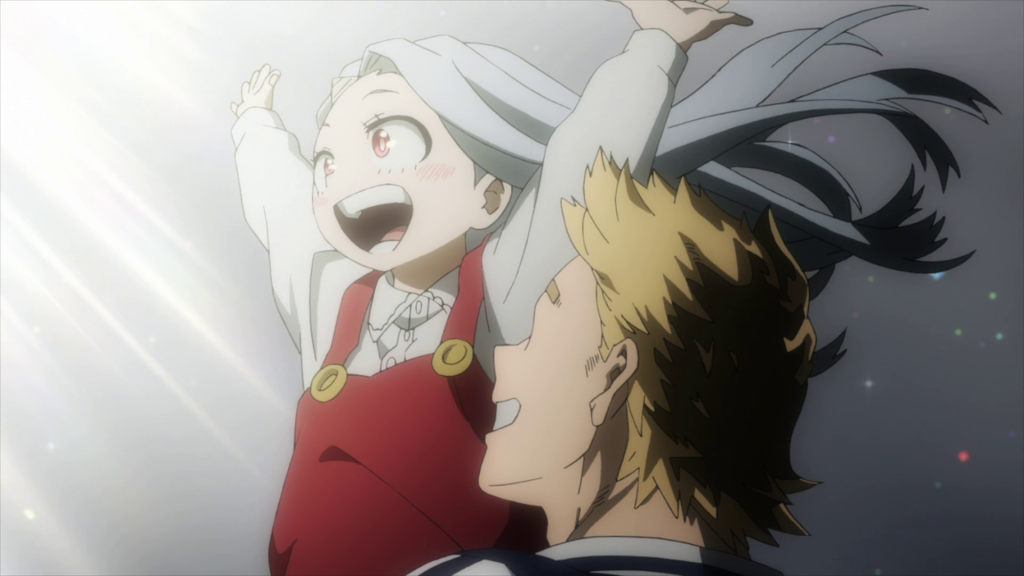
- Takashi Kawabata‘s opening set the tune for the entire season, both metaphorically and literally. I wouldn’t say he was a director on my radar either, but rather one who understood the tempo of the festival arc and channeled that into a really suitably fun opening. Also dying to know who was responsible for the best cut??
- Eri is a blessing and the festival managed to culminate all the anxieties resulting from the Overhaul saga into a fantastic payoff. In many ways I feel like they’re the same arc even though most people don’t see it that way?
- Haruka Iida and Atsushi Mori are two new names to keep an eye on, both surprised with really strong work this season without having much accredited to their names prior.
- Kouki Fujimoto is an animator who I’ve always felt fits the way this series handles action perfectly. Through the use of a Fude-ink pen, his stylish drawings are able to steal viewer attention even if the action storyboard lacks the dynamism needed to achieve that result by itself. I would point to his work on the Gentle fight in particular as an example of where his style is able to elevate the manga panels to a new level.
- One of the upsides to having a movie concurrently in production with the series is that some of the talented freelance animators working on said movie may take some work next door in the meantime. And that’s exactly what happened with the Endeavor finale, as Yuki Hayashi would lead the way and even do some recruiting of his own to ensure the episode had all the fire-power it needed.
- His contribution this time wasn’t quite as lengthy, however there was certainly no inspiration lost despite only handling seven cuts. Yutaka Nakamura continues to be must-watch entertainment. Strong way to end the season.
Somali and the Forest Spirit

- There is really only one aspect of this production which demands mentioning above everything else, and that is the efforts of Art Director- Vincent Nghiem. Fellow Francophone and anime designer Thomas Romain shared the adversity which Nghiem faced to create the remarkable setting we find in Somali and the Forest Spirit:
- It essentially boils down to an ungodly amount of work for a single person in a short time. An unfortunate but sadly very common sight found throughout this dysfunctional industry. If there is any consolation though, his video-game-esque art direction turned out fantastically, and when paired with the heartfelt moments which Somali and Golem’s journey frequently arrived at, were a major reason I stuck with the series until the end.
In/Spectre
- Keiji Goto is a director with strong drawing ability, so you can be sure that even if his series don’t have the highest ceiling due to working out of middling studios such as Brain’s Base, they will likely at least feature a solid floor by way of his corrections and frequent key animation. Goto ended up doing genga on all twelve episodes, including OP and ED. An expected contribution from him but still a neat piece of trivia.
- With that said, the ceiling for In/Spectre was surprisingly high? The first episode featured a number of strong action scenes, while grotesque morphing animation throughout the show carried a pretty snappy weight. It appeared as if all these strong scenes would remain without a credited artist forever until Yasuhiro Kajino was kind enough to share his work! Very little is known about Kajino as an artist, only that they’ve been an animator primarily located at Brain’s Base for approximately the past twelve years. Perhaps the larger role on In/Spectre, paired with the solid schedule lead to a stronger output than we’ve seen previously, but with so much unknown it’s impossible to say!
Fate/Grand Order: Zettai Majuu Sensen Babylonia
- Truthfully, my issues with this series weren’t limited to only the second cour. While it can surely boast the legendary efforts of Nakaya Onsen and friends for a single magical episode in number eighteen, F/Go as a whole still lacked the avant-garde screenplay needed to invest a non-game player like myself. Even invested fans of the franchise whom I’ve talked to at length about this series could feel the awkward pacing, as game segments were truncated and arranged in such a way that episodes felt like several disjointed mini-excursions rather than twenty three minutes of proper storytelling.
- You likely wouldn’t be able to tell at a glance because this series was so blessed with talent, but F/Go Babylonia actually lost one of their main action animation directors, Toya Oshima, to an illness. Oshima has thankfully recovered now, but his final contribution to the series (aside from a bit of 2nd KA on #18) was the dynamic storyboard on episode 8. Isao Hayashi would take his place for the second cour, and like the true professional that he is, was able to slot in as if nothing was amiss. However, having both artists firing on all-cylinders would’ve certainly helped down the final stretch of episodes.
- Megumi Kouno, the other action animation director on the series, also likely received a larger workload as a result of this, mainly only handling various corrections in the second-cour rather than the key animation which fans of hers so desperately desired.
- Noriko Takao seemed like she was slated to be the main force to be reckoned with on this series, as after directing episode #00 a lot of expectations were raised regarding her involvement. Ultimately, her only other contribution was the storyboard on the final episode. Perhaps a good thing considering how creatively restrained a lot of the directorial decisions appeared to be on such a main-stream property as this.
